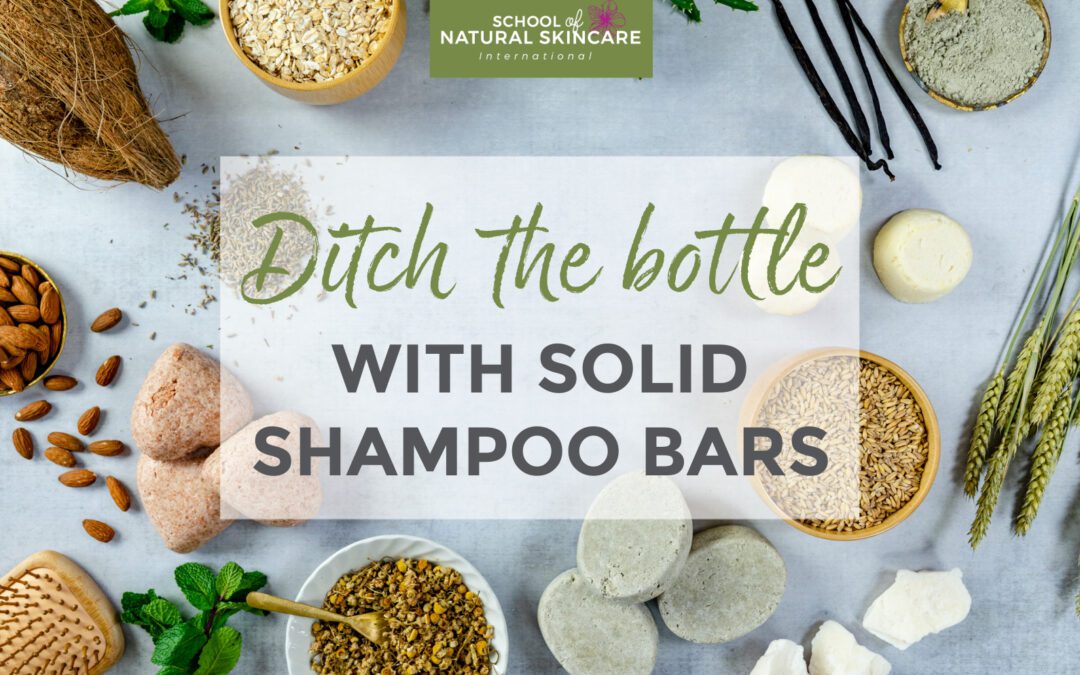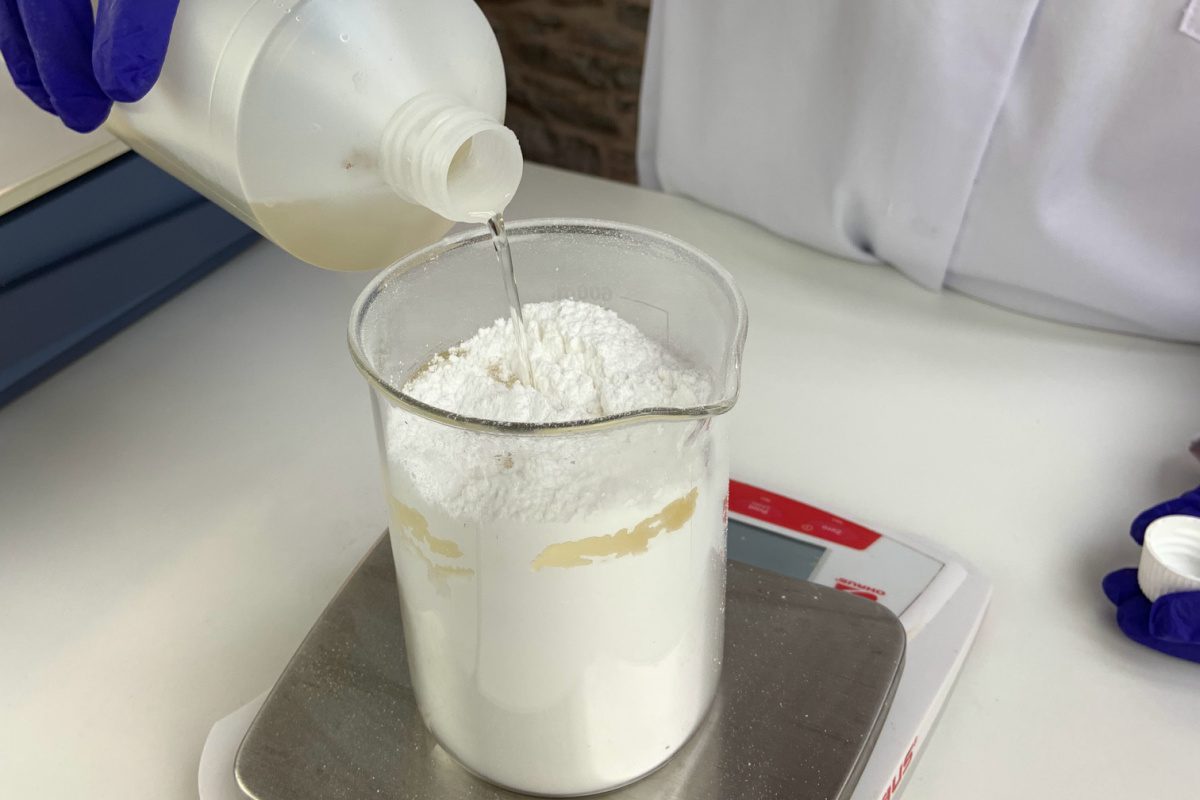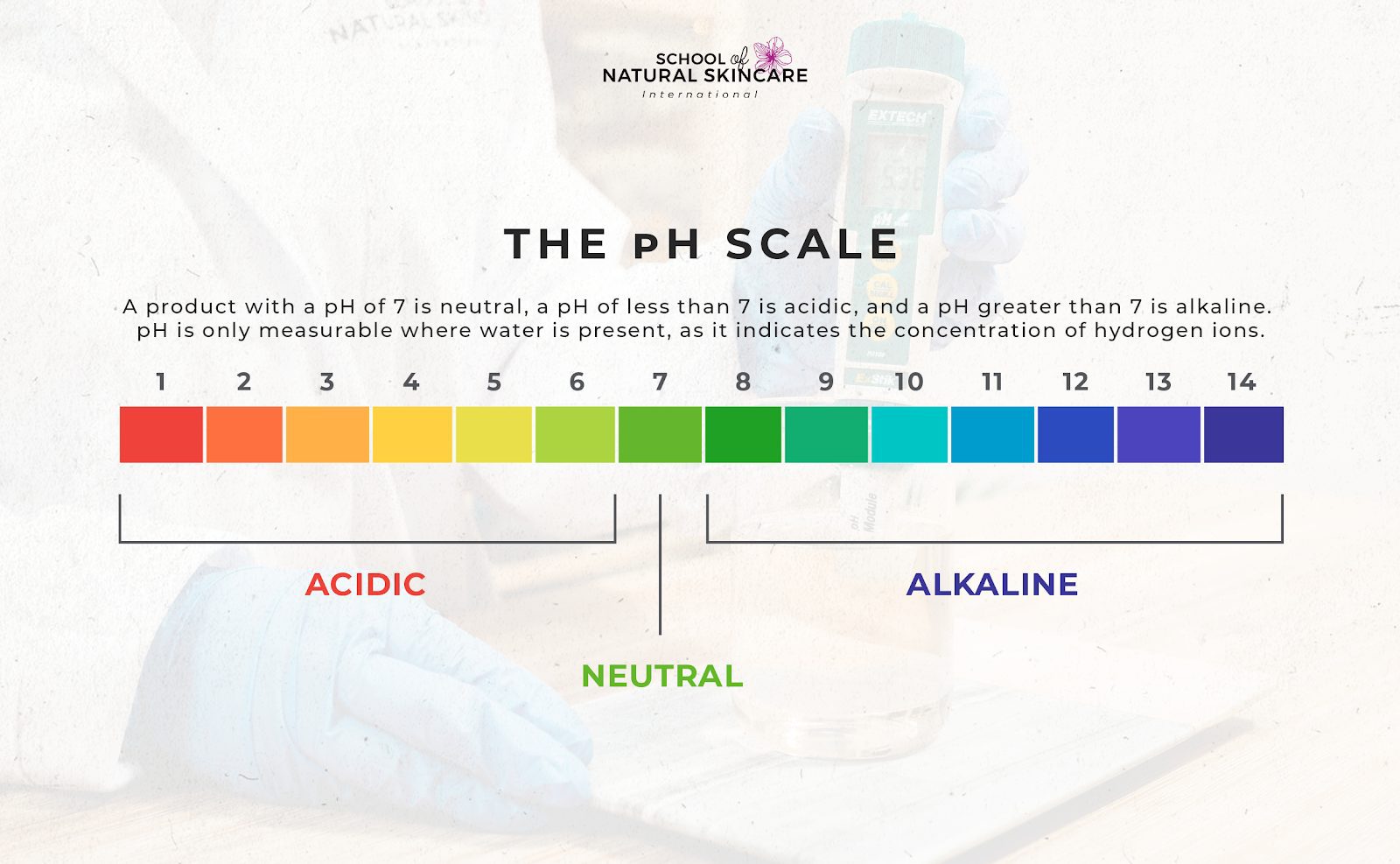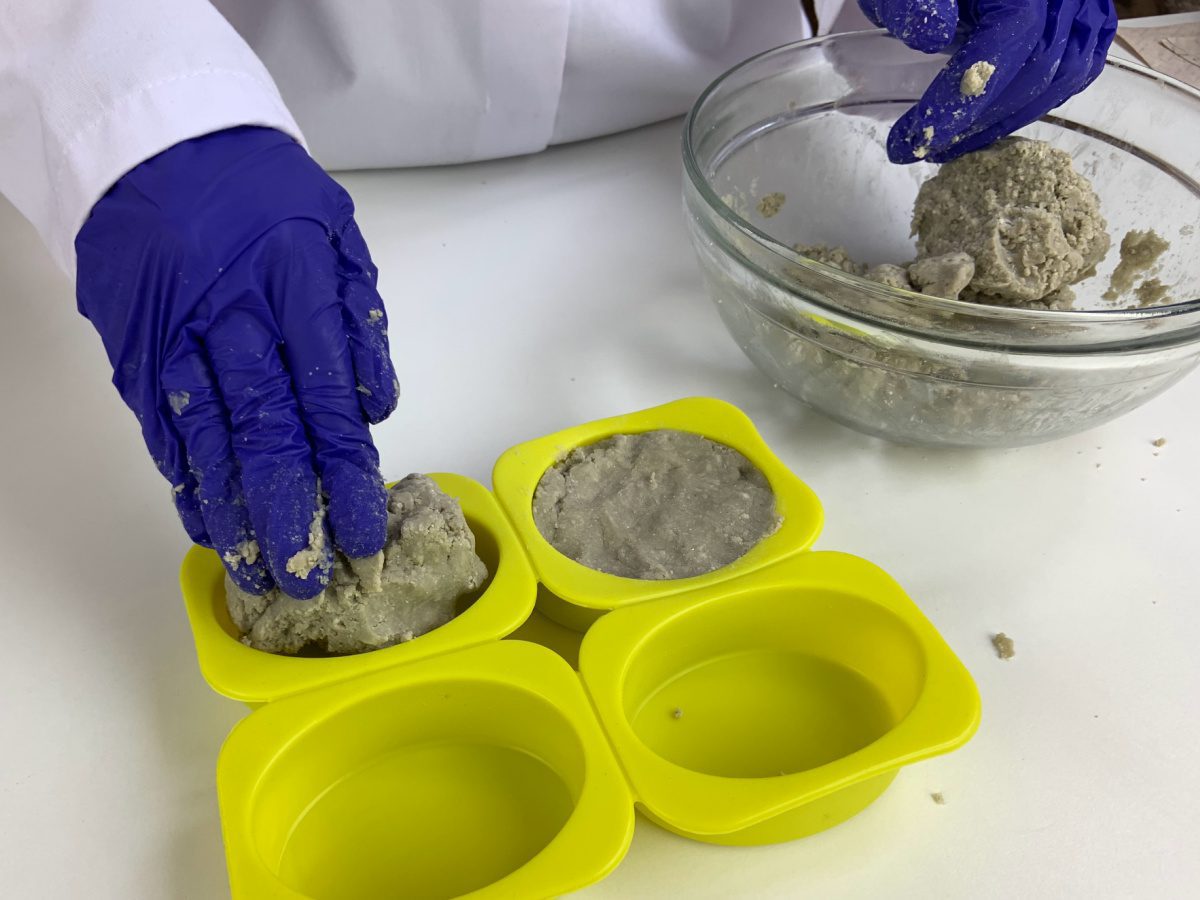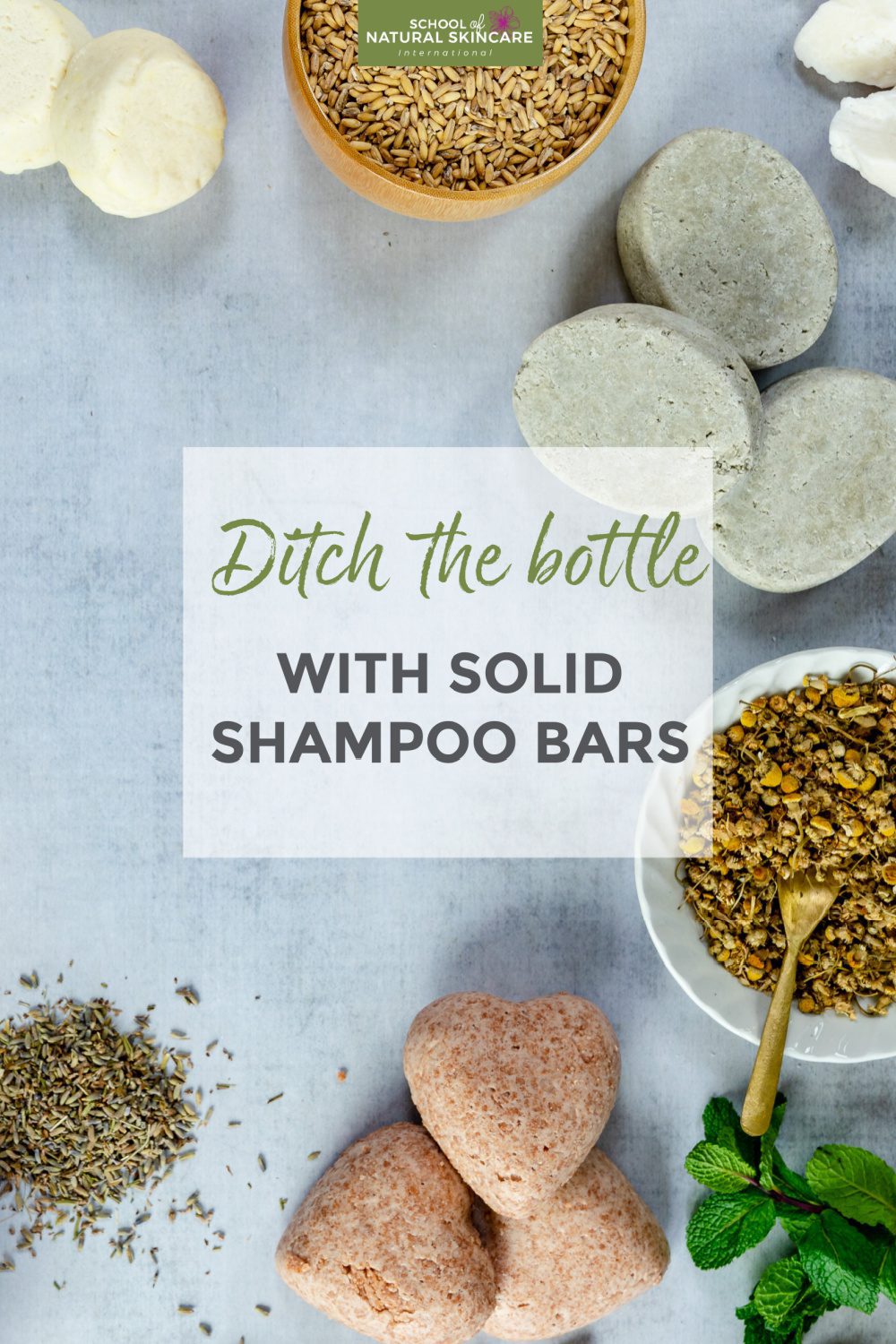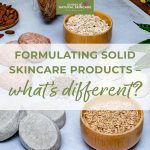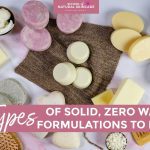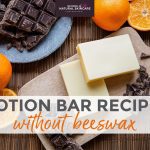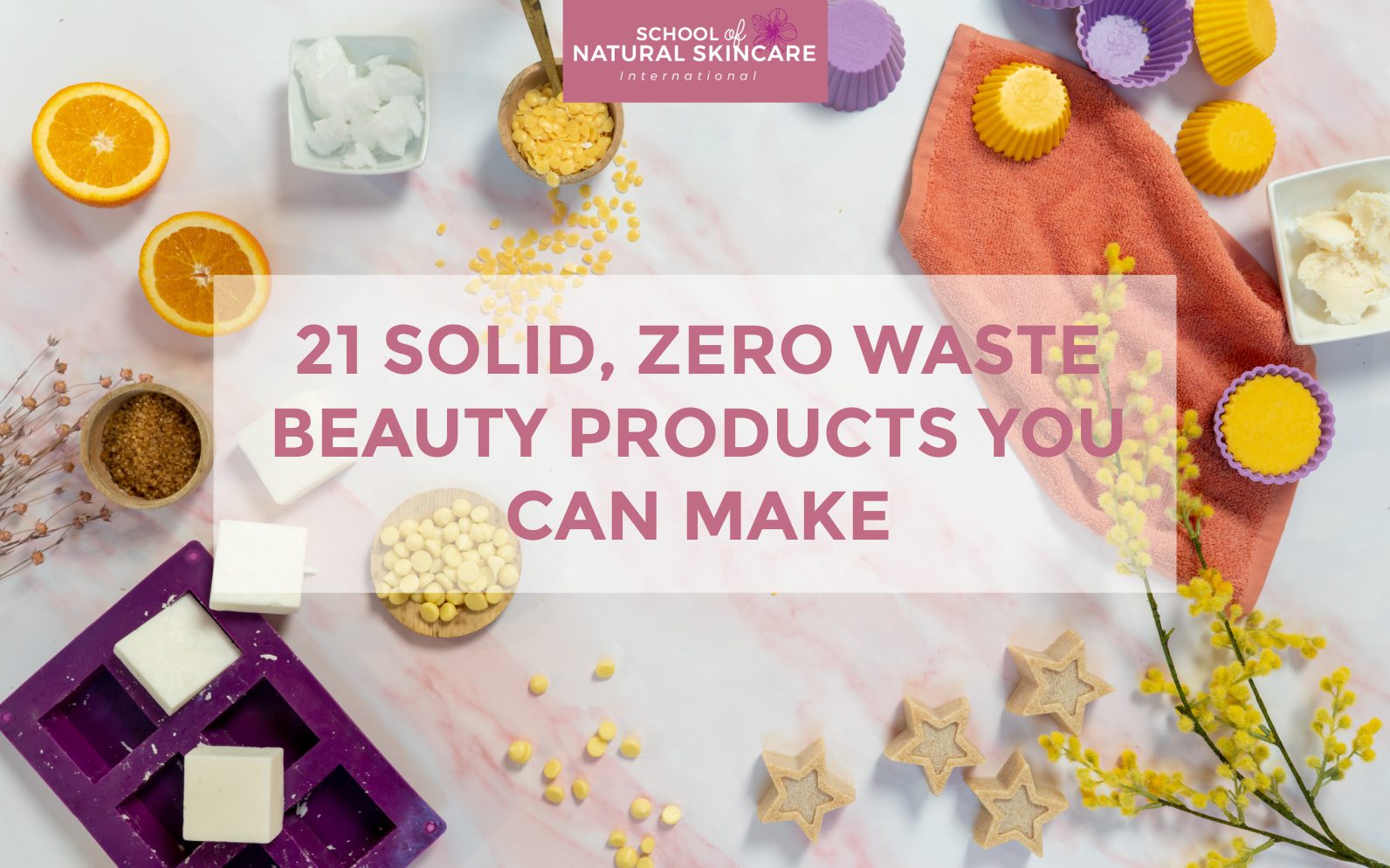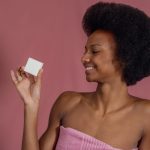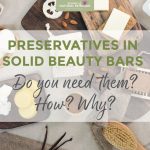Solid shampoo bars may be having a bit of a surge in popularity lately, but they’re not a new thing! In fact, solid shampoo bars have been around for a while. But since they’ve become somewhat trendy in the natural haircare movement, we thought we’d go over what they are, what benefits they provide, how you can make them yourself, and how they are different from just using a bar of soap on your hair.
What’s the appeal of a solid shampoo bar?
There are many benefits to choosing a solid shampoo bar over a regular bottle of shampoo.
1) Minimal (or no) packaging required
Many of us are trying to reduce our use of plastic, especially single-use plastic. Solid shampoo bars use minimal (or even no) packaging, and certainly don’t require a plastic bottle, so they generate less waste for the landfill. They can be packaged for sale very simply in biodegradable materials, since they’re solid and aren’t going to run out and spill.
Many people who travel prefer solid shampoo bars, as they won’t leak all over your luggage. (However, they may melt in higher temperatures, so think about that before your bag is out there waiting on the tarmac for hours!)
2) A little goes a long way
People also choose solid shampoo bars because they like to be able to use a smaller amount of product, but still have all the lather, cleansing, and nourishing that a regular shampoo provides. With a shampoo bar, a little goes a long way, meaning they last much longer. One or two swipes across your hair until you reach the desired amount, and you’re done. You can also slice them smaller for single-use needs, bringing just enough with you and reserving the remainder of the bar at home.
3) Waterless (and packed full of effective ingredients)
And finally, the growing popularity of “waterless beauty” means that more than a few beauty brands are turning to anhydrous, or water-free products. Water in a product usually just acts as a carrier or filler, so with the water removed, there’s more space for high-performance and other naturally-effective ingredients. This means that solid shampoo bars can pack quite a punch. That’s something that will be appreciated by the more label-savvy consumers, or ones looking to treat specific hair or scalp concerns.
What’s in a solid shampoo bar?
Solid shampoo bars contain the same types of ingredients as regular shampoo, but just with no water. This means they contain surfactants, conditioning agents, essential oils, and so forth—and preservatives!
Many natural and organic beauty brands claim that because their solid shampoo bars are made without water, they don’t need preservatives. We don’t entirely agree. Solid shampoo bars will still encounter water, sit in your shower, on the ledge, or in a soap dish, and any water droplets left on the surface of the bar can become a source of microbial growth. It’s much better to include a natural preservative, to create a safe and stable product that has a long shelf life.
There are differences between liquid shampoos and solid shampoo bars. Solid shampoo bars need to contain a high amount of solid ingredients, and only a low amount of liquid ingredients, to give them a solid consistency. Solid shampoo bars can also contain more conditioning agents and emollients like carrier oils and butters than liquid shampoos.
How are they different from soap?
For people new to natural beauty and natural haircare products, one of the easiest mistakes to make is assuming that because solid shampoos look like a bar of soap, any bar of soap will do for your hair! We’ve seen all sorts of DIY haircare methods out there that involve bars of soap, and we wouldn’t recommend going that route for a variety of reasons. Of course, every person’s hair and scalp is different, but generally speaking, you shouldn’t put bar soap on your head or on your hair.
So what is it that makes a solid shampoo bar different from a bar of soap? Soap is made from oil or butter and lye, in a process called saponification. This process results in a finished product that is great for cleansing the body, but has much too high a pH for the hair. Solid shampoo bars, on the other hand, have a lower pH and also contain surfactants, breaking up the trapped dirt and oils on the hair and scalp gently, so they can be washed away with water.
If you’ve purchased a shampoo bar and didn’t get on well with it, then there is a good chance it was actually a soap bar.
Understanding pH
pH is an incredibly important factor to understand when you’re making your own skin care and haircare products.
Skin has mechanisms of regulating pH, but hair does not. The surface of healthy skin will eventually return to its natural, slightly acidic pH after washing with soap—even with a high-pH soap (many of them are between pH 8 and 10.)
But hair can’t do that. It isn’t able to heal or balance. So it’s important to understand that one of the major sources of hair damage is using products with the wrong pH on the hair. Depending on an individual’s hair type and health, washing once or twice with soap might not immediately be a problem. But it can cause damage over time.
Hair needs a slightly acidic pH (typically around pH 5.0) in order for the cuticle to be closed down, and to decrease the static electricity which causes tangles and damage to the hair. Unlike soap, shampoo bars can be formulated to have an optimum pH for the hair.
How do you make solid shampoo bars?
The good news is that shampoo bars are not difficult to make and there are even different methods you can use.
For a great solid shampoo bar formula, as well as in-depth instructions, you can head on over to our tutorial here.
If you are keen to expand your skills in formulating solid, zero waste beauty bars, including shampoo bars, then you’ll LOVE our Diploma in Zero Waste Skincare and Haircare Formulation.
And if you’re interested to learn more about how to make your own natural haircare products including both solid and liquid products (shampoos, conditioners and treatments) then you’ll love our Diploma in Natural Haircare Formulation! It takes you step-by-step through everything you need to know to formulate your own custom, high-performance shampoos and creamy, perfect conditioners. Learn from experienced and professional formulators and be supported each step along the way.
Love learning about shampoo bars? Save this image below on Pinterest so you can be sure to remember!

